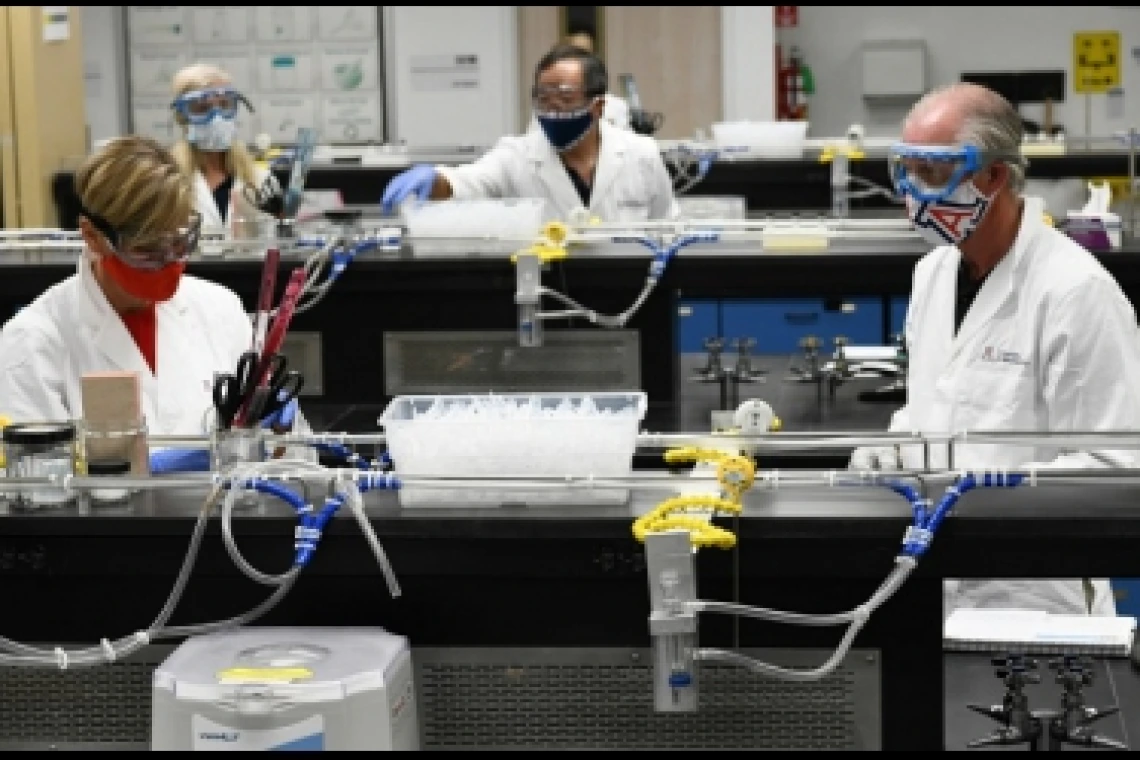President Robbins Visits CBC Undergraduate Teaching Labs

Mark Yanagihashi
Friday, July 31st. Braving 110 degree afternoon heat, President Robert Robbins (front right), Provost Liesl Folks (front left), and Dean Elliott Cheu (back middle) converged on the Koffler building (formerly known as CBS) for the purpose of visiting our undergraduate teaching labs to learn about the classes we teach and how we plan to run the labs as safely as we practically can during the pandemic. The Instructional Laboratory Support Group, Lab Coordinators, and CBC Machine Shop have been working to implement engineering controls and modification of tasks in addition to PPE requirements to mitigate the spread of Covid-19. Lab modifications include sneeze guards for the quad support rooms, removing seating in the classroom, restricting occupancy, changing lab curricula to achieve social distancing, and developing remote learning lab opportunities.
After taking the stairs up to the third floor of Koffler, as the group was too large to maintain distance in the elevators, the crew donned lab coats and goggles with their face coverings and got to work in one of the organic labs. As part of experiencing the lab conditions from the students’ perspective, they each initiated the noticeably exothermic crystallization of a sample of super-saturated sodium acetate and also collected pleasant-smelling vanillin recrystallized from water. Dr. Robbins recorded a proton NMR spectrum of some vanillin using one of our benchtop NMR spectrometers. Up some more stairs, the group journeyed to the fifth floor for a tour through the labs associated with our quantitative version of general chemistry. There they saw an impressive collection of glassware and instrumentation. After descending the stairs back down to ground level, they sat down in our largest lecture hall, Koffler 204, and listened to a brief presentation elaborating on the safety and pedagogical concerns that are shaping the evolution of our plans for the various types of chemistry laboratories. After some comments and discussion, our guests were treated to an entertaining demonstration involving nitrocellulose. Leaving with a favorable impression of the Department and our teaching labs, they went on their separate ways to return to their busy schedules.






